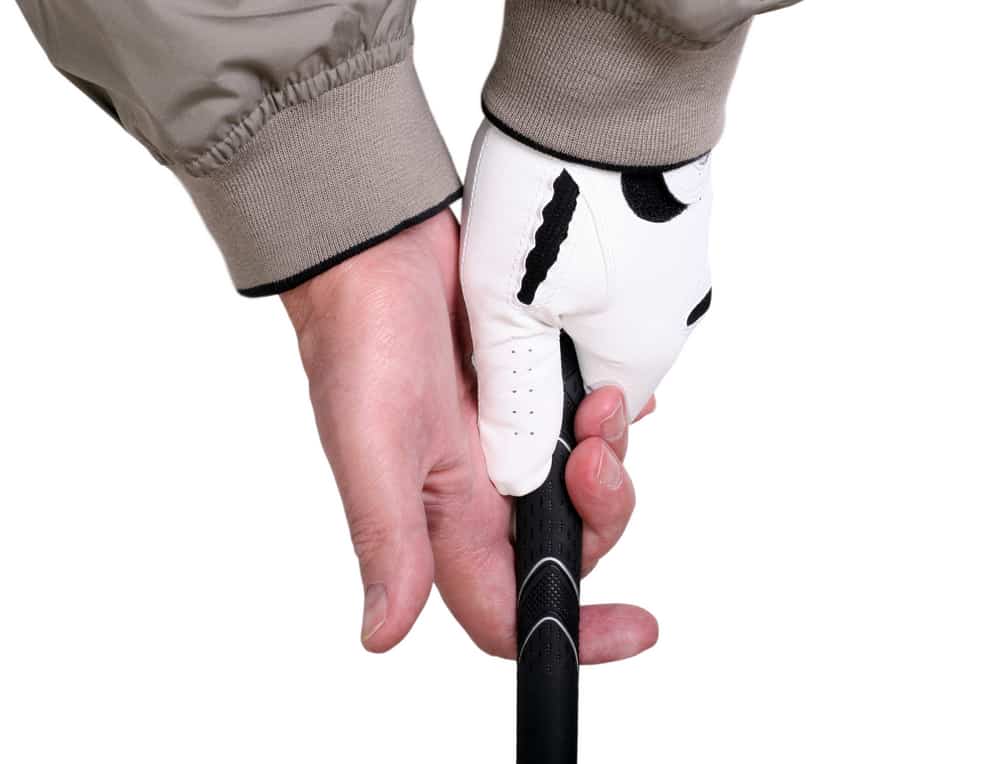
If you have been around the game of golf for a while, you know that there are many new golf swing methodologies from year to year.
This is something golfers have become used to, and many seek out each new swing concept.
The stack and tilt have some fantastic benefits for a player’s golf game, but many wonder if it is good for a player’s body.
If you are considering stack and tilt but worry about the effects on your body, you are in the right place.
In our guide, we will help you understand how stack and tilt will affect your body and whether or not it is bad for your back.
Is Stack and Tilt Bad for Your Back?

The stack and tilt golf swing is one of the safest golf swings for your back.
Certain parts of your back, the lumbar curve in particular, are best left stable when swinging a golf club.
The stack and tilt swing leaves many parts of the spine and the back more stable and, therefore, safer.
There have been quite a few misconceptions about the stack and tilt swing and its dangers for players.
It will help you from a health standpoint if your body is in better shape when swinging a golf club, regardless of how you swing it.
Golf, in general, can be challenging on a player’s body, so the better shape you are in, the better your chances of avoiding injury.
One of the significant issues which can cause pain for a golfer is when they start reverse pivoting.
When golfers reverse pivot, they put stress on their back in all the wrong places.
The stack and tilt method is designed to eliminate the reverse pivot, and that is one of the main reasons it is known to be safe.
How Do You Stack and Tilt?

There are four fundamentals of the stack and tilt swing.
You must keep these things in mind to correctly complete a stack and tilt-type golf swing.
1. Weight Forward

Most golf swings require a weight transfer from the left side to the right side.
With the stack and tilt, you keep your weight on your left side throughout the entire swing.
When a golfer turns back, they feel as though they are loading up their left side.
The concept helps to keep the golf swing simpler and more controlled.
When you start your stack and tilt swing, you won’t have 100 percent of your weight on the left side, just a majority.
As you finish your swing, all of the weight will transfer and ultimately be on the left side when the swing is completed.
2. Shoulder Down

When you swing back with the stack and tilt method, your left shoulder will turn down.
This helps keep a player’s head in place and eliminate more movement.
Maintaining this shoulder position helps to make sure golfers do not hit behind the ball and chunk it.
If you are a player who hits a lot of fat shots, the stack and tilt method can help tremendously.
3. Hands In

Since your weight is staying forward on the left side and your shoulder is moving down, you can’t swing your hands back the same way you would in a traditional golf swing.
If you were to swing your hands back in this way, your weight would have to transfer, and your head would have to move.
For the stack and tilt method to work, you have to move your hands more inside and around you than out and away.
4. Leg Straight

The last key element of the stack and tilt golf swing is the leg being straight at the top of the swing.
When the leg is straight at the top of the swing, you will have a lot more power on the downswing.
Even though Ben Hogan did not use the stack and tilt method, he believed strongly in the straight right leg at the top of the swing.
After a golfer makes contact with the ball, then the right leg will straighten.
The entire basis of the stack and tilt swing is to keep things simpler and eliminate unnecessary movements.
Getting golfers more swing speed and power can be hard to do because of all the moving parts of a golf swing.
Anytime some of those movements can be simplified, the amateur golfer has a greater chance of success.
What Is a Reverse Pivot?

In a standard golf, swing weight will transfer from your left side to your right side.
As you swing through the golf ball, the weight will then transfer back to the left side to finish the golf swing.
When a golfer makes a reverse pivot, they will leave the weight on the left side and then finish with the weight on the back foot.
The reverse pivot is something you see in a lot of newer or high handicap golfers.
A lot of times, it is caused by a golfer forgetting to turn back and using more of their arms in their golf swing than they should.
The reverse pivot puts your back at a very odd angle at impact, leaving you prone to injury.
When golfers reverse pivot, they are changing their spine angle throughout their swing.
You will frequently see a player’s head dip down and then pick back up as they come through impact.
Maintaining a spine angle throughout your swing is one of the key benefits of the stack and tilt swing and exactly why it protects your back from injury.
If you struggle with the reverse pivot in your game, you will notice lots of left to right type shots and inconsistency.
Switching to a stack and tilt could be a great idea to help you eliminate the reverse pivot and develop more consistency in your game.
Conclusion
The stack and tilt golf swing is not bad for your back as long as you do it properly.
You can’t choose parts of the stack and tilt and try and implement them; you must choose the entire method.
If you do this, your back may even start feeling better than it currently does.



Wow great artical, I’ve been using the conventional golf swing. It’s to difficult to learn. Works for awhile then goes south. I’m going to try the stack and tilt golf swing again. I’ve tried it a while back Irons were very good. But could never get the driver down. I’m going to give it another try. Richard,